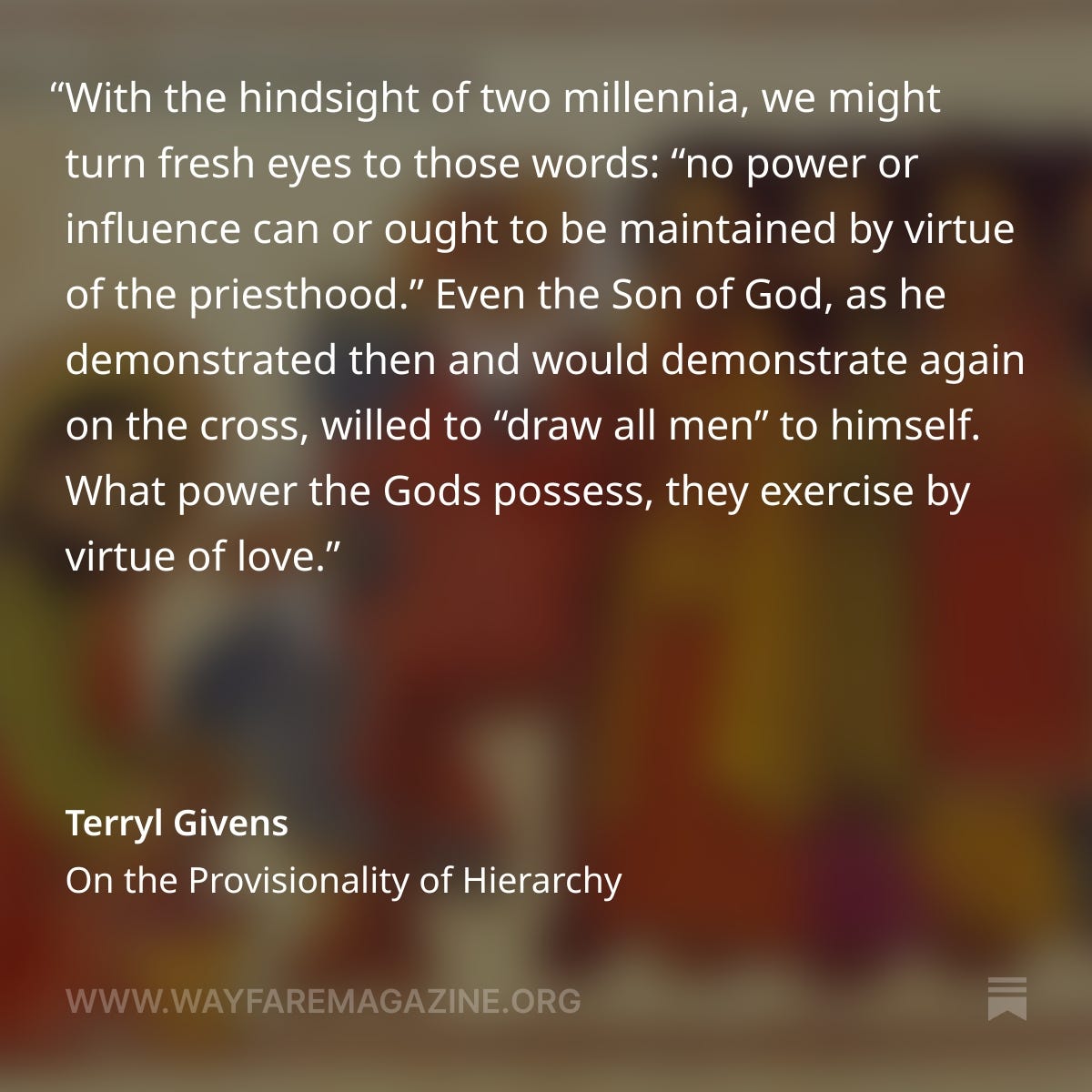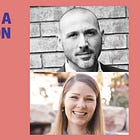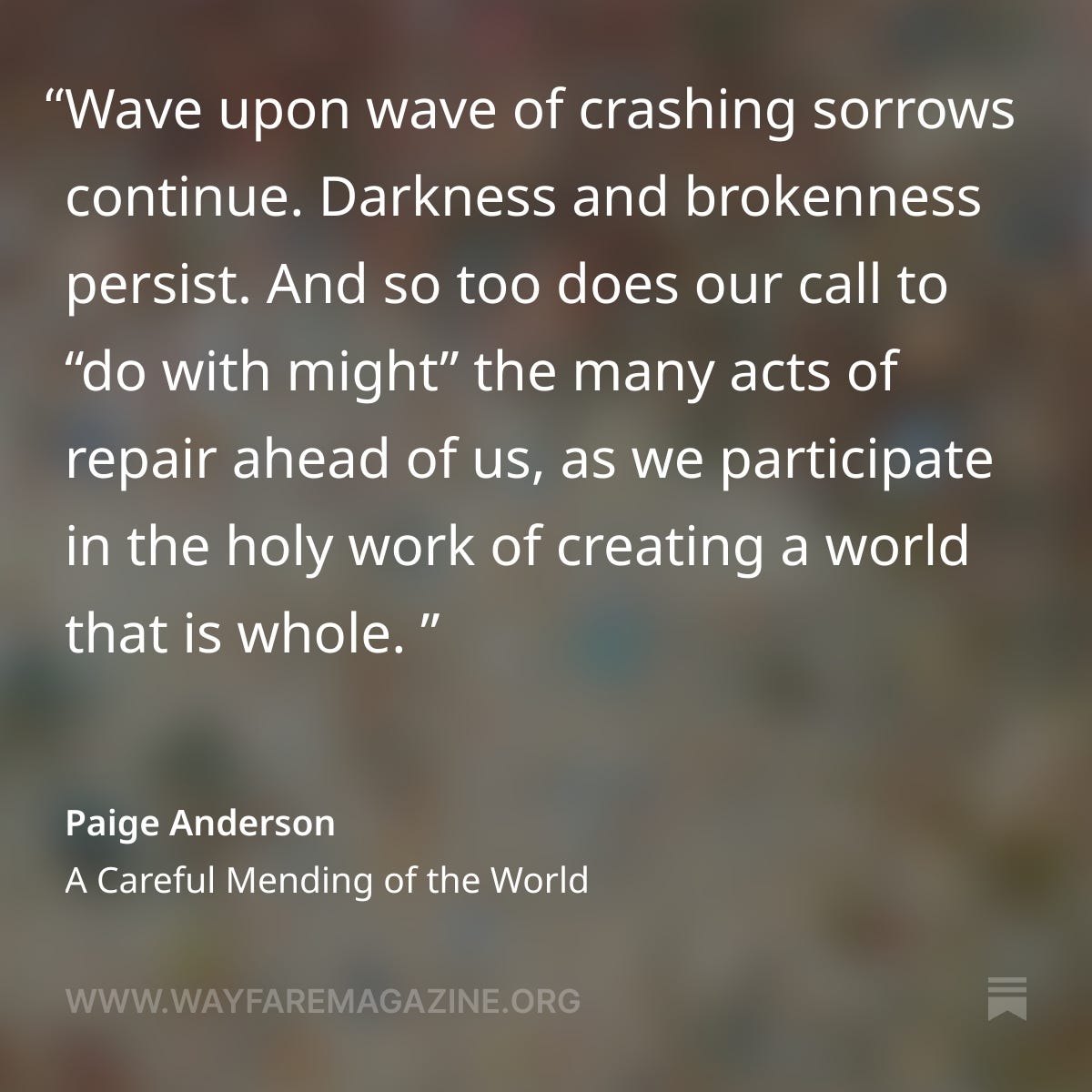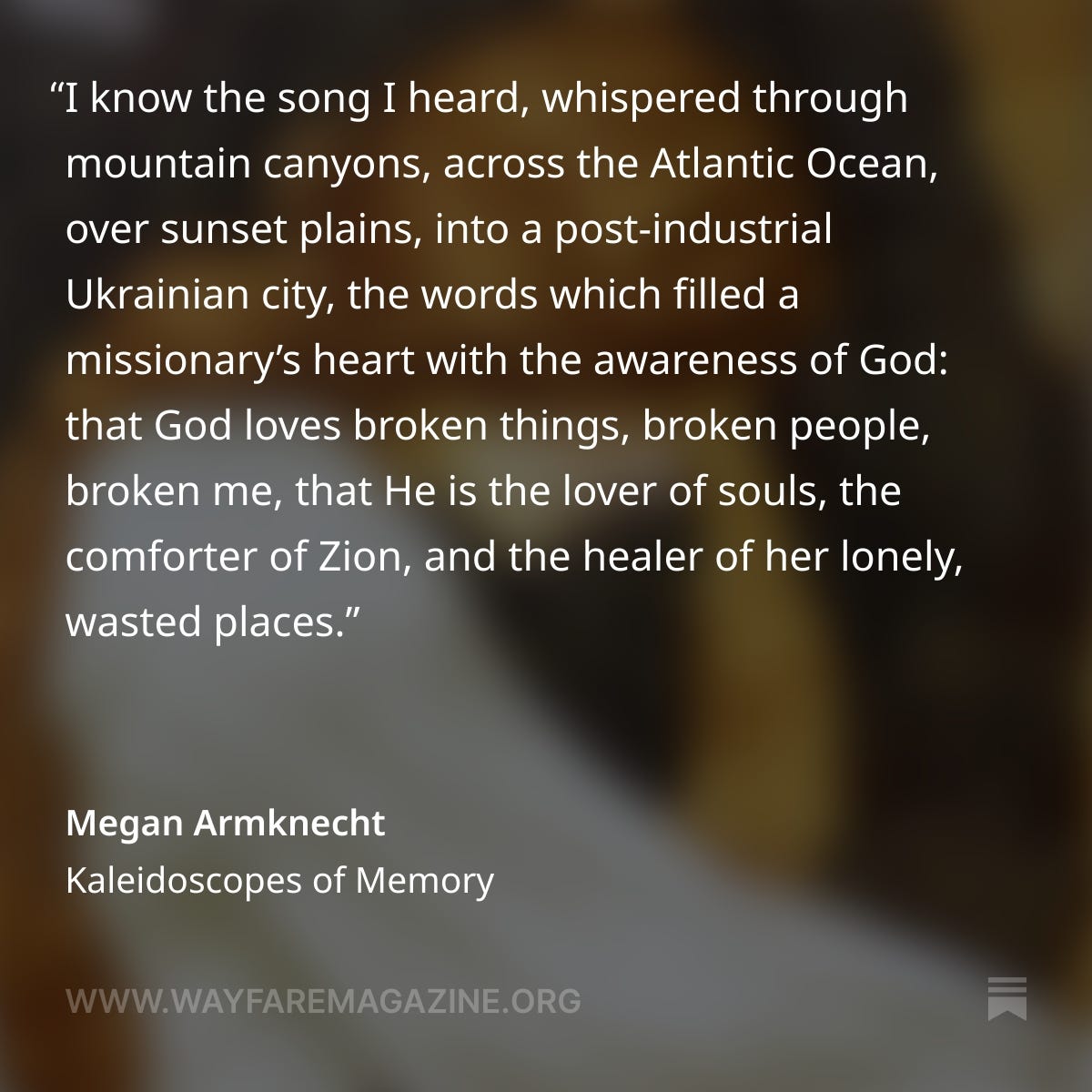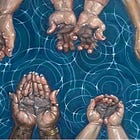What is Priesthood?
Faith Matters resources to accompany your Come Follow Me study: July 28-August 3
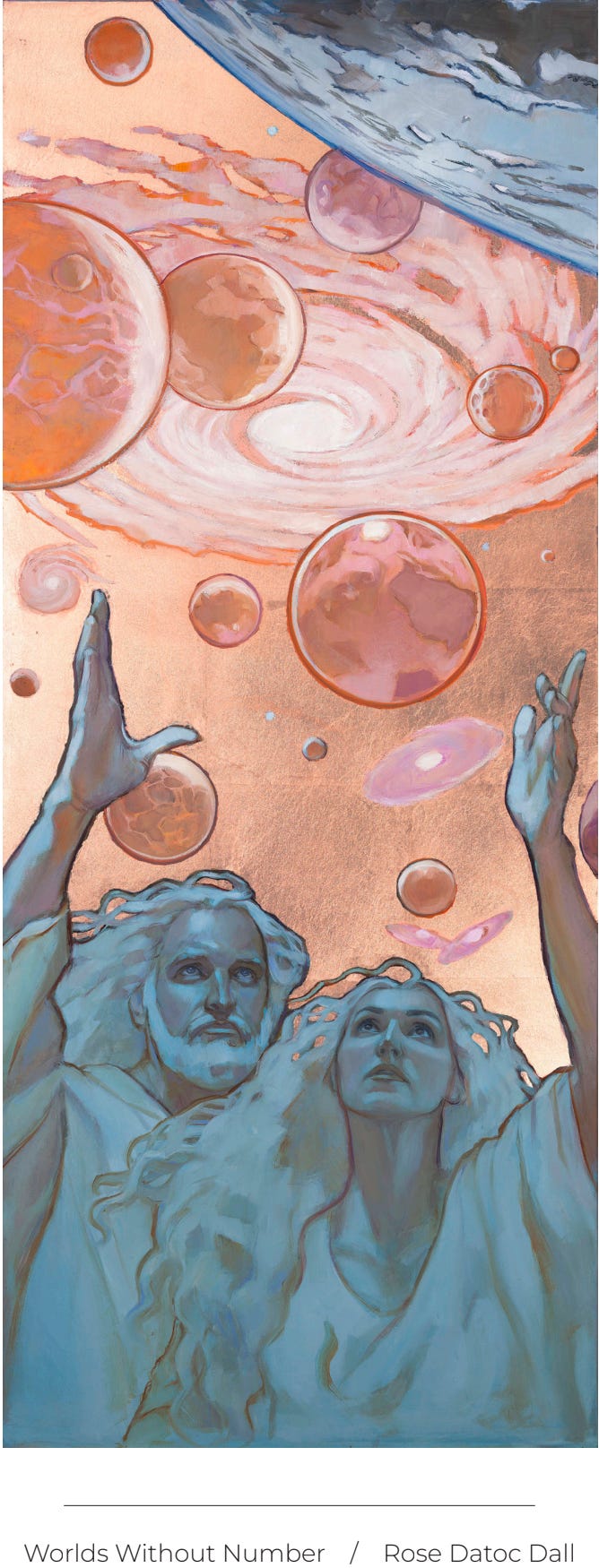
I have access to God’s priesthood power and blessings.
Few subjects in church discourse are more fraught than the place of women in our faith. Anyone who follows these discussions can point to multiple major recent examples where a commenter or leader has made an observation about these questions and a torrent of comments has followed, many of them expressing pain and frustration. To be clear, many church members, including women, feel satisfied with the broad contours of our current state, but many others do not. The satisfaction of even very many church members does not change this fact: a great deal of pain exists in the body of Christ around these ideas.
And that’s precisely the thing about pain: when it appears, and when it continues consistently—as this pain in the Church has for decades—that means the body is trying to tell us something. After all, a thriving hand does not invalidate an infection in the foot; a hale and hearty liver does not make inconsequential a failing in the heart.
—Tyler Johnson, “A Church for All of Us”
What is the role of women in the Church? We’ve had several conversations around this important, tender topic, and are committed to continuing to host thoughtful conversations about this. Find our previous conversations on this topic in our “Women and the Priesthood” tag:
You can also find a playlist on YouTube of 3 videos sharing our conversation with Barbara Morgan Gardner on her book The Priesthood Power of Women.
In the Greco-Roman world of early Christianity, women were considered inferior to men. Dr. Ariel Bybee Laughton says Christianity offered new ways to think about the roles of women in society, and that their power and authority waxed and waned over time. In this episode of Meet the Early-day Saints, we discuss her chapter “Church Organization: Priesthood Office and Women’s Leadership Roles” from the book Ancient Christians: An Introduction for Latter-day Saints.
The priesthood is obtained with an oath and covenant.
Nowadays, lawyers talk about covenants and contracts more or less interchangeably. But the older understanding of covenants tells us something important that can be easy to miss if we think of covenants as contracts. Covenants don’t just prescribe actions, they describe a change in status—when a vassal swore allegiance to a suzerain, or a knight pledged fealty to his liege, they changed not just what they did, but who they were. They were now bound to the sovereign—they belonged to him. And their status relative to their peers changed, too. You’d think twice about attacking the duchy of a knight protected by King Arthur, rather than just some random peasant with a sword.
One Latter-day example of this type of covenant is in Section 84 of the Doctrine and Covenants, often called “The Oath and Covenant of the Priesthood.”
“For whoso is faithful unto the obtaining these two priesthoods of which I have spoken, and the magnifying their calling, are sanctified by the Spirit unto the renewing of their bodies. They become the sons of Moses and of Aaron and the seed of Abraham, and the church and kingdom, and the elect of God. . . Therefore all that my Father hath shall be given unto him. And this is according to the oath and covenant which belongeth to the priesthood” (D&C 84:33–39).
Notice that this is not simply a list of duties or mutual obligations. This is the language of kinship, of loyalty and protection and inheritance.
—Kristine Haglund, “Covenants & Contracts”
Living by the word of God brings light and truth into my life.
The scriptures teach that a spirit is made of words, light, life, intelligence, and mind. Those things aren’t poured into a mold and mixed up at random. A spirit has a pattern, and IS a pattern. Your spirit is the pattern of being that makes you you, the pattern that you act out as you live in your body. (John 6;63, D&C 84:44-46, Lectures on Faith 5). Like Jesus, whose spirit fills the immensity of space, you will learn that your spirit can extend beyond your own skin and imprint itself on the world around you for better or for worse. When we talk to each other, when we work together, when we tell stories, when we sing and paint and build and dance, we are sharing our spirit patterns with one another.
—Bob Sonntag, “The Sacrifice of All Things”
Learn from Adam Miller & Rosalynde Welch on how to experience the scriptures as a site of revelation:
The Lord will be with me when I am in His service. Heavenly Father helps His servants.
Missionary, a new definition:
Missionaries are people who teach about God not just with their mouths but with their hearts. They are often unknown and unheard. They are sometimes despised and rejected. They can seem weak and silly and inconvenient. But they bless the world wherever they go. And if you tell a missionary to go away and never come back, the missionary might feel down, or sad, or unsuccessful. But if the missionary keeps loving, they are still a missionary.
—Josh and Sarah Sabey, “Jacob’s Big Idea and The Missionary who Prayed and Prayed”
Everyone can contribute to the work of God.
The body of Christ has comedians and dancers, activists and healers, politicians and painters, musicians and athletes, those who cherish the good and those who root out the bad. There are thinkers and doers, speakers and listeners, teachers and learners, people who have found grace and those who are still seeking it. In my ideal conglomerate self, I would be all these things. But my life is embodied, not ideal—lived out with a particular personality, body, and mind. In choosing one life, one way of being in the world, I don’t need to assume my work matters less than others. I also don’t need to judge my friends for not choosing the life I have.
In the body of Christ, Casey is a foot, Mark an eye, Sarah a shoulder, Lauren a neck. My friends are elbows, ears, hearts, wombs, and backs. Part of choosing a certain devoted life involves un-choosing other devoted lives. It means appreciating and supporting other vocations and ways of being that look vastly different from our own.
—Hannah Packard Crowther, Gracing
Temple ordinances help me prepare to live with Heavenly Father again.
Ritual… is a way of teaching through action rather than words—though by that I don’t mean that it’s a code to be cracked. Instead, ritual teaches by inducing us to behave in certain ways, to become the sort of person who does ritual rather than the sort of person who knows something. The person who does these rituals is a person who perceives herself the recipient of divine love.
That is the role of the priest: to call us to that remembrance and that sense of being a people, in a relationship with each other and with God. Priests remember the very idea that’s embodied in the creation of priesthood in Exodus—that we can build a people and a community out of a disparate and diverse group.
—Matthew Bowman, “The Prophet and the Priest”
In 2018, Oxford University Press published my The Power of Godliness: Mormon Liturgy and Cosmology. A primary argument of that volume was that in conjunction with the temple liturgy, Joseph Smith revealed an expansive cosmology, where “kinship, priesthood, government, and heaven all became synonymous.” For Smith, heaven was not a reward or destination. It was relational—a network of people materialized through the rituals of the temple, a “cosmological priesthood.” … Throughout the nearly two hundred years since Smith introduced it, the temple has remained a liturgical space where Latter-day Saints generate a sacred, cosmic identity. The temple is a site where Latter-day Saints order their bodies, their communities, and their universe.
—Jonathan Stapley, “A Cosmic Identity”
I have little clarity on what the whole temple experience means or what realities it brings about. But there is something powerful in the idea that remembering our dead—their suffering, their grief, their sin, their pain, their hopes, their missed opportunities—is in some way redemptive when we seek to make right what was wrong. …
There’s more to the project than linking names and checking off ordinances. We’re linking souls. We’re welding hearts from both sides of the veil and both sides of painful conflicts. In this effort, my overarching desire is in gathering the entire human family home to each other and to God.
That’s the fundamental work.
Remembering and redeeming the dead reminds us that the Atonement of Jesus applies not just to abstract everybodies, but to specific neighbors, coworkers, and family members that irk and harm us—Kathy from accounting, Greg who lives around the corner, or even Beulah. In doing work for a specific person on an actual temple card, I am reminded of the much bigger universal family of which I’m a part and in which I’m immersed—for better or worse. In doing the temple work for Beulah, I’m reminded of the healing work in which I should be engaged here and now. …
The work of remembering our dead reminds me that salvation isn’t just an individual matter. Healing and redemption do not occur in isolation, but in collaboration—amid one giant, universal family. …
We can heal our dead and ourselves when we bring the whole of humanity to the altar of God—not as individuals, but as one massive, messy whole.
For me, the temple points to something bigger and grander than it’s often given credit for. It’s not just my nuclear family that can be exalted for eternity; it’s the whole human family. And it’s not just a ticket into heaven; it’s the healing, redemption, and making right of all that is wrong in the human family—all of creation. It requires remembering all that went wrong and enacting ways to make it right. It involves immersing ourselves in the power of the divine, as well as in the reality of humanity, infused with deep time and ridiculously drawn-out patience.
… We bear one another’s burdens, say all the unsaid things, bind up all the hurts, right all the wrongs, and wipe all the tears from all the faces. We do not just what is required or deserved, but what is needed. We pick up His yoke and remember that the weight is shared among all those in the family of God who are willing, from past to present to future.
—Hannah Packard Crowther, Gracing
I can receive Heavenly Father’s power through priesthood ordinances.
It’s not just separate and distinct agreements made at baptism, during the sacrament, and in the temple. It’s not a legal contract with pages of clauses. It’s one promise. It’s one choice. It’s saying yes to gracing. Fundamentally, it’s not making covenants (plural), it’s living in covenant (singular). It’s living in Christ.
Baptism is not fundamentally about keeping some people out of heaven and letting others in. The symbol is an invitation. Baptism says, “Salvation is here.” Right now. Enter God’s presence and start living life as it was meant to be lived. Baptism says, “In Christ, your old self has died and your new one has risen.” Don’t wait. Enter into the divine dance now, so that when you mourn with those who mourn, and comfort those who stand in need of comfort, you will do these things differently. You will do them in Christ.
…Life is busy, no doubt. And it can easily become a long list of empty nothings if we constantly find ourselves checked out or oblivious to our divine partner. We may think we’re on our way to heaven as we do all the right things, but in this frame of mind, we could arrive in heaven and not even know it. All these works, even if performed exactly and by the book, will be hollow. They will fail to transform us. They won’t help us fly.
Going deeper, we can repurpose our tools. Learning to bring God’s music into our activities often requires practice. Our intention shifts. We say yes to God. We invite God into the process, even if the end result is unknowable or undefined. It’s characterized by hope and seeking. It has a wholly and holy different feel.
—Hannah Packard Crowther, Gracing
I am Jesus’s friend as I follow Him.
Of the many reasons I am a Christian, chief among them is that Jesus invites each one of us, no matter how broken or imperfect, to join his banquet table and become his friend. What does he ask in return? You are my friends if you do what I command. What does he command? Love one another, as I have loved you. To follow Christ is to take friendship seriously. Perhaps more seriously than anything else. Zion, ultimately, is a city of friends, but with friendships deepened by a sacramental relationality enabled by the love of Christ—an alchemy of grace where acquaintances can be transformed into kin. For Latter-day Saints, perhaps our most beautiful doctrine is that families are forever, and so are our friendships. “That same sociality which exists among us here will exist among us there, only it will be coupled with eternal glory.”



